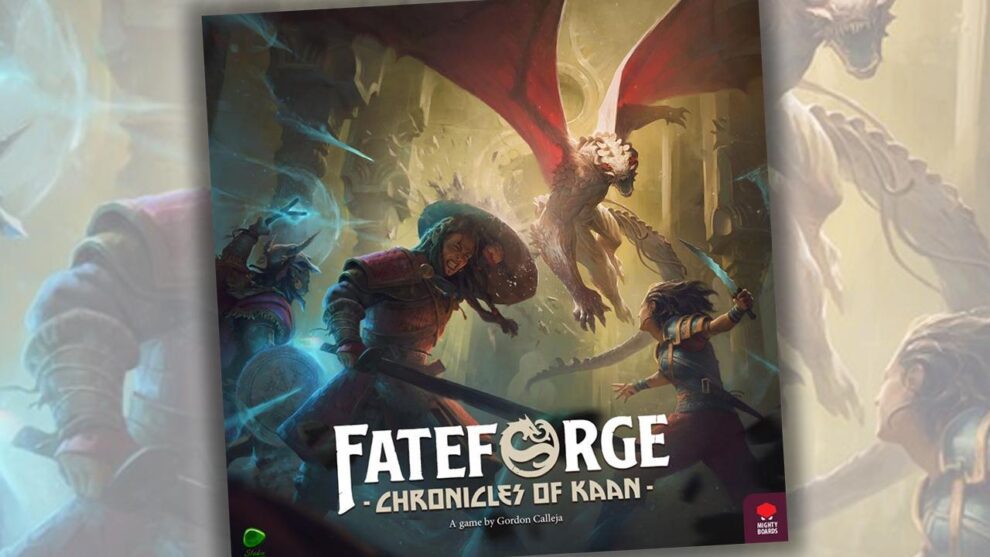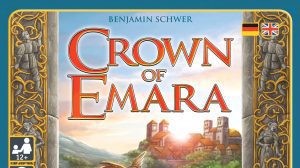Disclosure: Meeple Mountain received a free copy of this product in exchange for an honest, unbiased review. This review is not intended to be an endorsement.
Generally speaking, I am not an RPG guy.
From time to time, I can be tricked into Gloomhaven-like gaming experiences. While games like Gloomhaven feature some elements typical in a role-playing game like Dungeons & Dragons, the main focus is on the combat and the loot, not the storytelling.
Don’t get me wrong—I love good storytelling, especially in my visual arts, like TV and film. But in my board games, I want action. If I only get an hour or two to play a game every night, I wanna get in there!
As long as we are speaking broadly, I’m also not a tabletop campaign guy.
Maybe you’ve experienced this, too—it is getting harder and harder to get people to come over to play the same game 12-15 times. (Sometimes, it’s hard to get people to play the same game twice, am I right?) If anything, post-COVID life killed the ability to do campaign games. During COVID, we found another couple or two to “bubble up” and play campaign games, or my wife and I did two-player games on our own, because no one had anything else to do.
But when the world opened back up, getting a weekly run of games like Clank! Legacy—Acquisitions Inc. became almost impossible in my circles. Who is coming out to play the same game for two hours a pop, ten or eleven weeks in a row? One of my gaming groups got past the second mission of Clank! Legacy then struggled to get a third date on the calendar…and that was two years ago. [cue readers nodding in agreement]
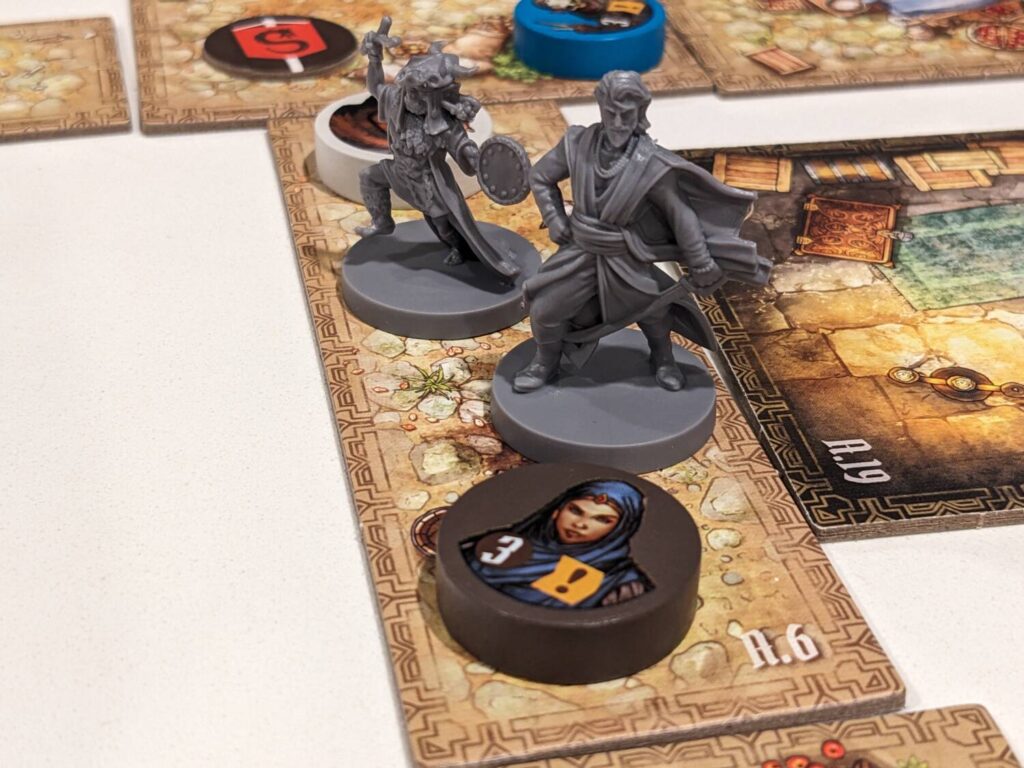
So, as much as I love the team at Mighty Boards, when they handed me a copy of their new app-driven RPG-adjacent game, Fateforge: Chronicles of Kaan, I had a minor panic attack as I thought through the possibilities. Will I really be able to finish a 15-to-20-hour campaign game? Will I lose steam trying to get through mission 8, 10, or 14, keeping my eye on the prize with multi-hour sessions where I have to listen to subpar voice acting while discovering treasure that ends up being the equivalent of a few gold coins?
Then, I did a little digging. Fateforge: Chronicles of Kaan has a solo mode, so I wouldn’t have to worry about trying to make Google Calendar the main enemy of my campaign. The scenarios in Fateforge are usually bite-sized, with most playable in under an hour and side quests that might take 20-30 minutes. The maps are built with tiles that fit on even the smallest of kitchen tables, so this is not the table hog that other games tend to be.
And Fateforge was built by Gordon Calleja, who designed my favorite roll-and-write system of the last few years, Vengeance: Roll & Fight. That game’s combat might be the snappiest fighting system I’ve ever seen in a board game, so if Fateforge could be played fast and the dice system is interesting, I’m 75% of the way home.
Then I kicked off the app for my tutorial mission and I was off to the races. While this review is based on my first seven missions (five main missions, a side quest, and the first boss fight) and represents somewhere between a quarter and a third of the overall campaign length, I already know where I stand.
For anyone who likes the idea of an “RPG in a box” without any of the traditional RPG/campaign strings attached, please buy Fateforge: Chronicles of Kaan right now.

Where’s Waldo?
Fateforge: Chronicles of Kaan is a 1-4 player, cooperative, app-required campaign game that features more than 30 hours of content. I am playing solo, which requires one player to manage two of the game’s five available characters. I took on the Nobleman and the Shaman for my campaign, in part because the Nobleman has a purple player board (my favorite color) and the Shaman looked like an entity who might have healing powers. (I was right.)
The Fateforge app does a lot of the game’s heavy lifting. The sound in the app was perfect—including appropriately dramatic music mixed with a constant din of swordplay, screams and monster effects to keep the action interesting—and I was relieved that there was no narration or voice acting in the game, just a decent amount of text to read. While I love good voice acting in games like Freelancers: A Crossroads Game (in part because the script is so hilarious), voice narration would have slowed Fateforge down. I don’t mind some story from time to time, to help bridge the action scenes.
During the game, players band together to visit the mythical town of Easafir, where they must try to rescue an emissary from a palace where they are being held captive. There’s a lot going on in town—people need to be rescued, a side quest took me all over the city to find answers from a cult-like organization, and the players must connect with the local resistance to prep for the run-up to the first boss fight.
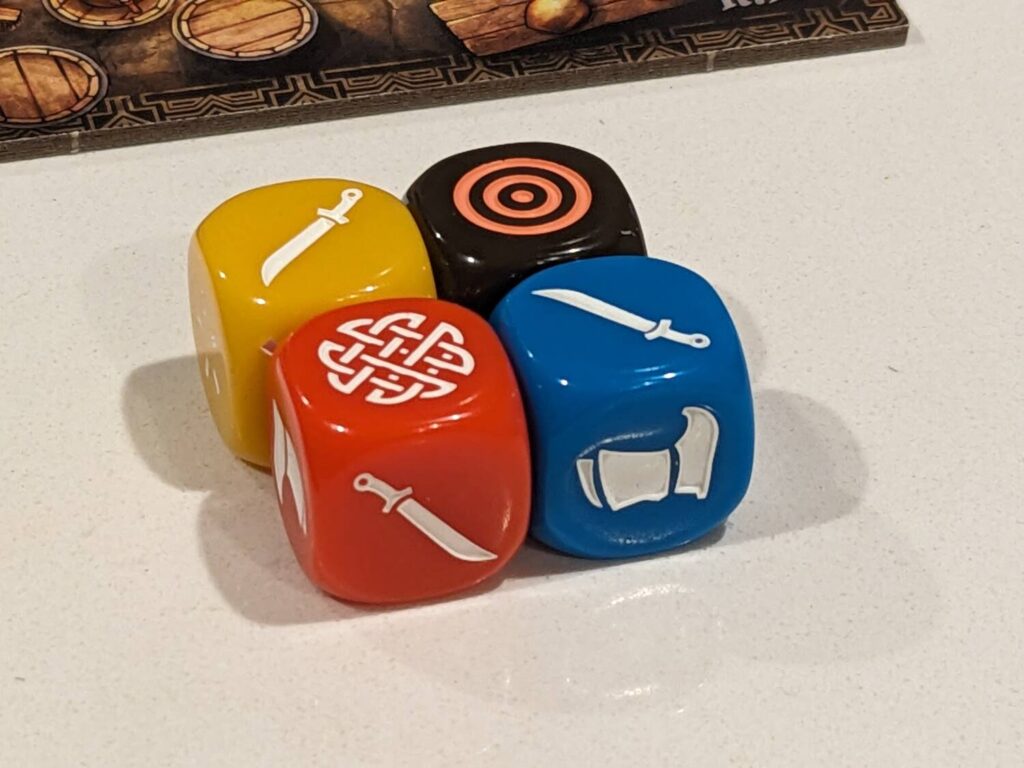
The storytelling in Fateforge didn’t take the genre to new heights.It was fine, which for me was perfect. In many ways, I look at these longer RPG-style campaign games as “blah blah blah, combat”, and I thought Fateforge did an excellent job of establishing the big “why”, then letting me chuck a bunch of dice. Calleja doesn’t let the narrative get in the way of the story scenes versus combat scenes. Each time there was a break between the action, you get a bit of narrative, a bit of map play, then you are back in the thick of another combat sequence.
Story scenes are augmented by the use of the game’s map, which I thought was just window dressing when the game began. Fateforge comes with a sprawling, beige-heavy paper map of Easafir that shows about 25 different locations. But after the second or third mission, I was asked to “walk” my two-character party from location #1 on the map to another destination, and I had to find visual cues on the map that aligned with the clues given by an “non-playable character” (NPC) in the app.
Suddenly, Fateforge became a mix of Where’s Waldo? and Micro Macro: Crime City! Wait, now I have to use my brain to actually walk around this map?
But these moments turned out to be a fun exercise to decipher where I needed to go. Thankfully, these sequences were not nearly as difficult as some of the harder missions in Micro Macro, and it made me feel like I couldn’t just skip to the next thing in the app, which I appreciated. I don’t mind a detour if it’s a tasty pit stop, and Fateforge uses the map masterfully to keep things moving and keep the player engaged.
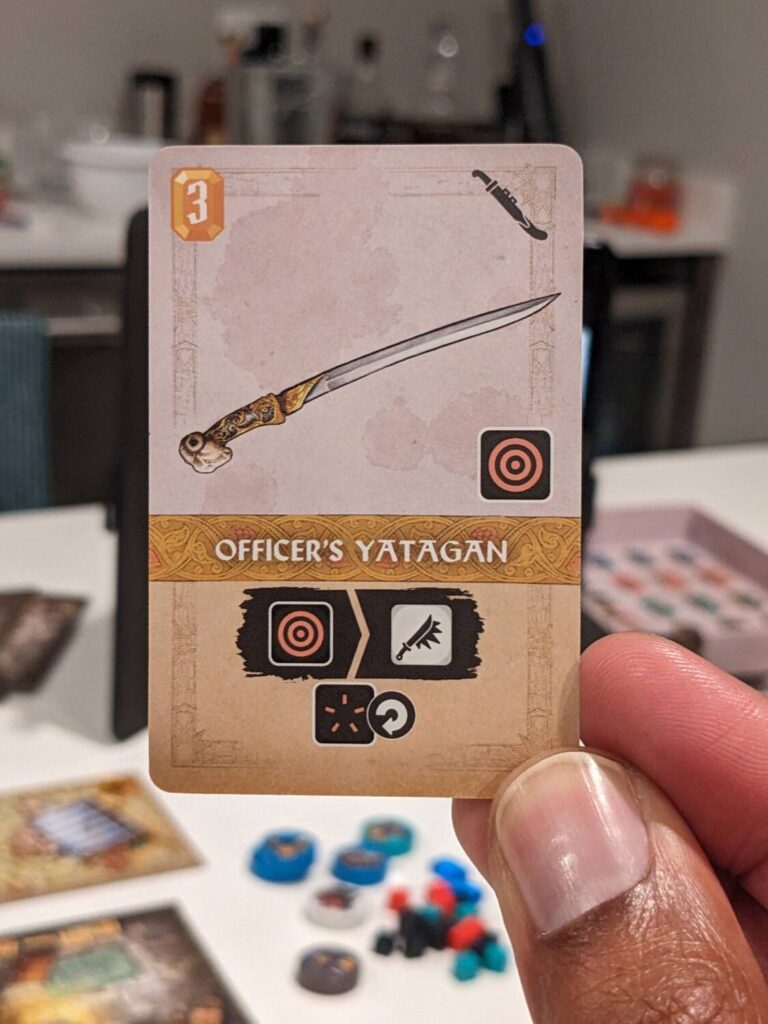
I Thought It Would Be Easier in Easafir
Remember, I came for the combat…and Fateforge, like Calleja’s previous work with Vengeance: Roll & Fight, delivers thrilling combat that rewards thoughtful decision-making.
The combat in Fateforge is some of the best combat I’ve seen in a game this year, and I have had a spectacular year simulating combat in board games (off the top of my head: The Warp, Arcs, Andromeda’s Edge, Bestiary of Sigillum, Quartermaster General: East Front). The Fateforge app sets up each combat scene by populating a tile layout with hazards, food, treasure chests, and up to six different enemy types, ranked using a simple color system that tells you which guys are bad, which units are tougher, and which bosses are flat-out nasty.
Then the human player only has to build the pictured scenario, then players can go about their business wiping deserving scum off the face of the map. Each combat scene offers a set number of rounds, and special rules for the scenario are shared before players begin making preparations.
I was surprised how often Fateforge got tough even early on. Even though I’m still early in the campaign, my two heroes totaled five “KOs” (knockouts) across the seven missions I’ve played, and I got out of the boss battle by the skin of my teeth—both of my heroes had one health point left when I finally emerged victorious.
Each round in combat is executed the same way. First, players can take optional actions, which include re-rolling dice (if a character has available energy tokens on their player board) or taking a free “dash” movement action that costs a health point if dashing from a tile that has at least one enemy currently on it. I really love the Three of a Kind rule—when rolling a character’s combat dice, they can manually make one die a face of their choice if they roll three of the exact same die faces on their combat roll.
When players take actions, they will do the things that one might expect given the setting: move around, stab an opponent in the same tile, use a ranged attack into an adjacent tile, or execute a host of special actions based on the active character. But the actions all flow so well, the rules overhead for combat is light—thankfully, no line-of-sight rules here!—and it helps that a lot of enemies go down with a single strike. I love it in games (not just Fateforge, but anything really, even my video games) when maps are populated by weak minions that take up space.
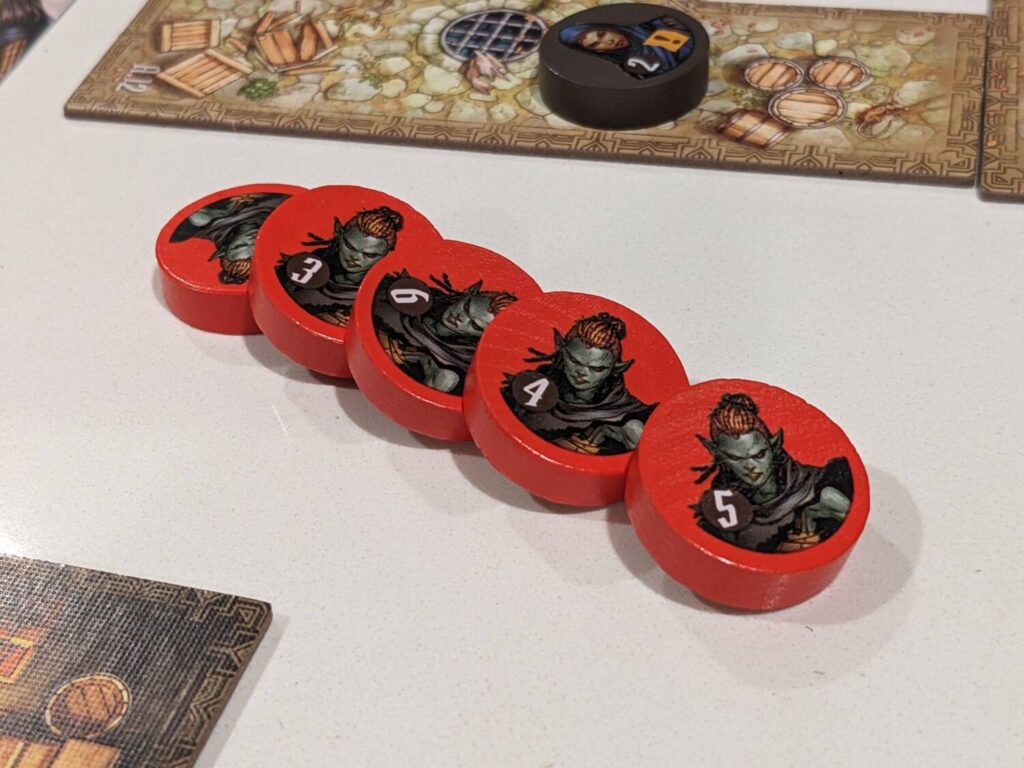
You are always torn by the push-pull of clearing the scraps versus running towards the level’s big boss, knowing that it is possible that the game’s pursuit rules could lead to being ganged up by a bunch of those weak missions later on. Plus, there are treasure chests on some levels that have juicy rewards—am I really going to skip those if I can mow down 3-4 low-level baddies?
The game keeps enemy reaction turns minimal. Either before I could take my turn, or in-between the two characters I was using, exactly two enemies on the map activate and attack or move towards the hero party. Taking that into account led to fun planning in every round, by trying to ensure that my defenses were ready for a number of little things based on what the app randomly picked for each round.
Managing the bad guys is as simple as running down the enemy color priority for everything within two tiles of party members. It never took more than a few minutes. Many enemies have special abilities that trigger based on the actions of the player, but I was thankful that many special actions stay consistent depending on the enemy types included in a scenario. One of my missions required me to take on a horde of undead minions, most of whom had the ability to respawn after each round’s clean-up phase with the Resurrect ability. Some units have to be targeted first, while others restrict players from leaving a tile with those baddie types.
None of the enemy types or special abilities are particularly novel. I was OK with that because the combat system is solid.
The core of the combat system? Dice. Each character always has a chance to roll four dice, a mix of either their starting four dice or weapon dice that come with certain weapons that can be slotted next to each character’s board. Depending on the die’s color, a die might give you better chances to move, attack at range, or melee opponents. Some die faces offer a binary choice—move or attack, or maybe a choice between attacking or using the Focus action, which is usually tied to interacting with objects on the map.
The one thing I wasn’t able to see in the solo version of the game is how players work together when rolling their dice in secret, per the rules for the preparation step of each round. In multiplayer, each player has a screen used to hide their rolled die results. Then players plan out the round but can’t tell each other what their specific die results are. This would be nice to know because the players choose the order in which they take priority each round, with the app determining when enemy reaction turns take place.
I love that initiative is a choice here. It adds a nice layer to the strategic elements for each round, but it’s also fun to try and chain moves based on what characters can clear which areas before other players begin their action phase. Fateforge has a nice “game within a game” element during combat even in the solo mode, so something tells me this would be even more interesting (with the rub of also being more time consuming) with a partner or two to help plan.
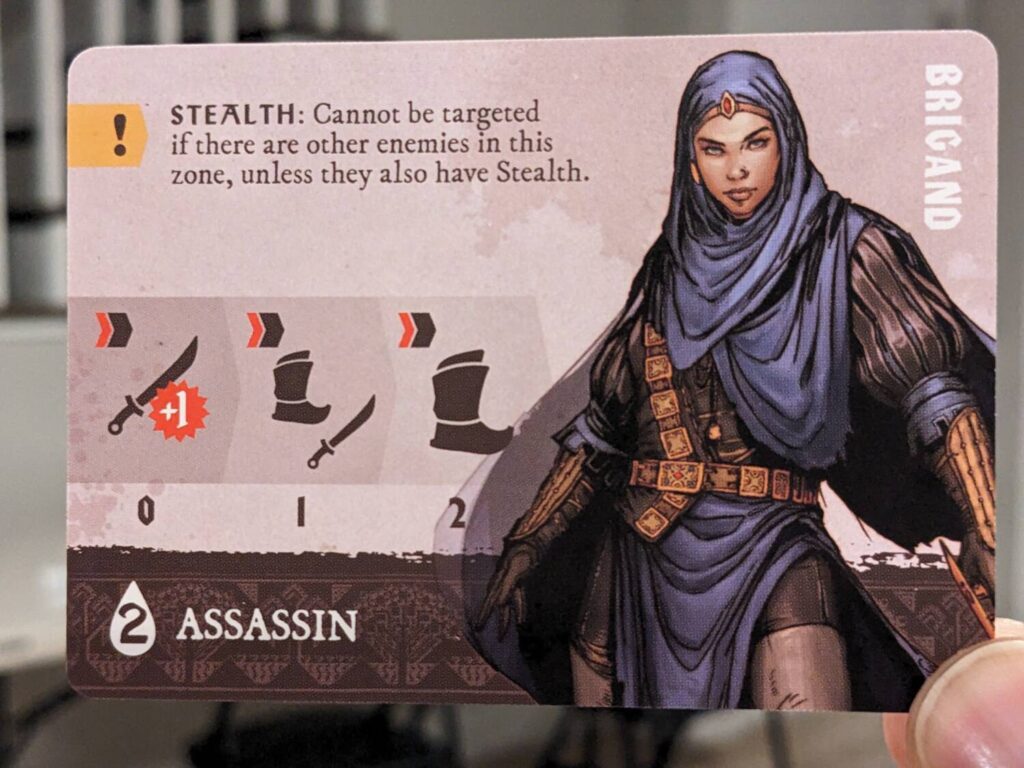
What Isn’t Working (So Far)?
The only thing I haven’t loved so far are tests in Fateforge. Like every RPG I can think of, Fateforge has points in the narrative where a player’s skills are tested with a check executed using a simple die roll. (It would have felt weird if there was not a phase where somebody rolled for a dexterity check or something similar, right?)
In Fateforge, there are test dice that occasionally need to be rolled. But none of the tests have felt interesting, at least not yet. Worse, I keep failing tests, even the supposedly “easy” ones, where I have failed two of the three easy tests I have faced. The easy tests require a roll of just one of the test dice, with a 66% chance of coming up aces. If a character has the trait being tested (each character starts with one trait printed on their player board, with others acquired during the game), they have a five-in-six chance—83%—of passing the test because one of the six die faces on the test die is a symbol that grants a test success if the player also has the matching trait.
The missing element of tests, at least early on—unlike in combat where a player can spend energy to re-roll, re-rolls are only possible in tests if a player has a matching trait.
My side quest came down to a test, which failed after a poor die roll. That didn’t feel great, to spend a decent amount of time hunting symbols on the main map, only to have everything come down to a die roll that failed. (To be fair, Freelancers also suffered from this issue, albeit more frequently.) It’s hard to know what I missed out on by failing the tests in Fateforge, but it’s the principle more than anything!
Another nuisance—there are about 40 tiles available to build each map, but they come in only 4-5 different shapes. So far, I’ve needed 6-12 tiles to build each combat scene. Sometimes, it feels like the terrain doesn’t really matter that much, outside of creating a map that has adjacent zones to trigger ranged combat or movement rules.
I’m a nerd, so I wanted to use the tile matching the one I saw in the app…but, if we just need a long hallway-style tile to build the southwest section of the grid, and none of the flavor art matters, why do I need to specifically use tile A8? I am already considering a shift to just using tiles that align with the adjacency rules, and not hunting for the specific numbered tile to save some time.
There’s one more thing I haven’t loved yet, but that’s only because each game like this I have tried handles recovery differently. In Fateforge, your situation at the end of the mission is where you’ll start the next combat scene, unless there’s a rest scene built in-between. That means if you have a health threshold of six life, and you end a scene with only one health left, you begin the very next scene with one health, plus anything granted by the scenario end rules (typically a recovery of just one health and one energy).
I started two of my combat scenes basically dead, so it was not surprising when the successive missions ended badly. Each game has its own format and that’s Fateforge; I prefer games where I can go for broke in one round then reset my health to go hard again in the next scenario, but that’s my preference and not an issue with the game.

The First of Many
I’m really enjoying the Fateforge system so far. The app is great, the combat scenes have all proven to be interesting, and I love the bite-sized nature of the playtime. I will definitely continue my current campaign before tackling the expansion, Clash of the Immortals, early next year.
Calleja’s design here creates so many fun questions as I’ve had to deal with minions, mid-level enforcers, and each scene’s main objective or boss using my party’s powers within the given environment. In many ways, Fateforge is my favorite kind of puzzle—using the power of combat dice, how can I most efficiently take out all the bad guys in the shortest window while keeping my party alive?
My only major regret so far is not taking at least one other player along for the ride…but playing solo is best for my availability this fall, so I’m going to stick with it for this campaign and maybe a second. The game does have an element of drop-in and drop-out so that a campaign doesn’t stall out if one of your friends suddenly can’t keep up, and even better, you could add a player into your current campaign at any time.
Fateforge also comes with a Battle Mode, if the small amount of story is too much for a player. That’s right—you could play Fateforge as only a dice-chucking combat game, but I’m enjoying the discovery elements that come with meeting characters, solving the visual puzzles, and completing side quests to find more treasure or items that grant a character additional buffs.
Tests are great so far, but otherwise Fateforge: Chronicles of Kaan is a home run. I’m excited to plow ahead!


